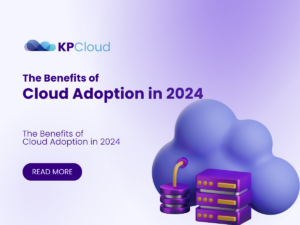Table of Contents:
1. Introduction: The Importance of Cloud Optimization
2. Cloud Optimization Basics
3. Assessing Performance and Efficiency
4. Cost Optimization Strategies
5. Security and Compliance Considerations
6. Optimizing Workloads and Applications
7. Conclusion
What is cloud optimization?
Cloud optimization is the process of maximizing the efficiency, performance, and cost-effectiveness of cloud resources. It involves optimizing costs, enhancing performance, right-sizing resources, ensuring security and compliance, and automating processes. By optimizing their cloud infrastructure, organizations can achieve better performance, cost savings, scalability, and operational excellence in the cloud environment.
Basic Cloud Optimization
When it comes to cloud optimization, understanding the foundational principles is essential. In this section, we will cover the fundamental aspects of cloud optimization that form the building blocks of an efficient and high-performing cloud infrastructure. Here are the key areas we will explore:

(1) Resource Allocation:
Optimizing resource allocation involves effectively assigning cloud resources, such as virtual machines, storage, and network bandwidth, to meet the demands of your applications and workloads. By right-sizing resources and ensuring appropriate scaling, you can prevent underutilization or overprovisioning, leading to cost savings and improved performance.
(2)Performance Monitoring:
Monitoring the performance of your cloud infrastructure is vital to identify bottlenecks, detect performance issues, and proactively optimize resource usage. By leveraging monitoring tools and performance metrics, you can gain insights into the health and efficiency of your cloud-based applications and services.
(3) Cost Optimization:
Managing cloud costs is a critical aspect of optimization. By analyzing resource consumption, identifying cost drivers, and implementing cost optimization strategies, you can optimize spending and achieve better cost efficiency. Techniques such as using reserved instances, leveraging spot instances, and implementing automatic scaling can help reduce unnecessary expenses.
(4)Security and Compliance:
Cloud security is a paramount concern. Implementing robust security measures, including access controls, encryption, and monitoring systems, is crucial to protect your cloud resources and data. Compliance with industry regulations and standards is also essential to maintain data privacy and meet legal requirements.
(5)Automation and Orchestration:
Automation and orchestration play a significant role in optimizing cloud operations. By automating routine tasks, such as provisioning and configuration management, and orchestrating workflows, you can streamline processes, reduce errors, and improve overall efficiency. Infrastructure as Code (IaC) techniques, utilizing tools like Terraform or CloudFormation, enable consistent and repeatable infrastructure deployments.
By mastering these cloud optimization basics, you will be equipped with the foundational knowledge needed to drive efficiency, improve performance, and extract the maximum value from your cloud environment. In the subsequent sections of this guide, we will dive deeper into each of these areas, providing you with practical strategies and best practices for effective cloud optimization.
Assessing Performance and Efficiency
To optimize your cloud infrastructure, it is crucial to assess its performance and efficiency. This allows you to identify bottlenecks, fine-tune resource allocation, and ensure optimal utilization of cloud resources. In this section, we will explore the key aspects of assessing performance and efficiency in the cloud. Here’s what we will cover:
Monitoring and Performance Metrics: Implementing a robust monitoring system is essential to track the performance of your cloud environment. We will discuss the importance of monitoring various metrics such as CPU utilization, memory usage, network latency, and application response times. By leveraging monitoring tools and services, you can gain real-time insights into the health and performance of your cloud-based applications and infrastructure.
Identifying Bottlenecks and Performance Issues: Understanding the performance bottlenecks in your cloud environment is crucial for optimization. We will explore techniques for identifying and diagnosing performance issues, such as analyzing log files, using performance profiling tools, and conducting load testing. By pinpointing the root causes of bottlenecks, you can take targeted actions to resolve them and improve overall performance.
Analyzing Resource Utilization and Efficiency: Assessing resource utilization helps you identify underutilized or overprovisioned resources. We will discuss techniques for analyzing resource usage, such as tracking CPU and memory utilization, monitoring storage consumption, and assessing network bandwidth. This analysis enables you to optimize resource allocation, and right-size instances, and eliminate wasteful spending.
By effectively assessing performance and efficiency, you can gain valuable insights into the health, utilization, and performance of your cloud infrastructure. This knowledge empowers you to make informed decisions and implement targeted optimizations that drive improved performance, cost savings, and overall operational excellence. In the subsequent sections of this guide, we will delve deeper into specific strategies and best practices for optimizing performance and efficiency in the cloud.
Cost optimization strategies for cloud environments:
Rightsizing Resources: Analyze the resource utilization of your cloud instances and storage to ensure they are appropriately sized. Downsizing or upsizing instances based on actual workload requirements can help eliminate unnecessary costs associated with overprovisioning or underutilization.
Utilize Reserved Instances and Savings Plans: Take advantage of Reserved Instances or Savings Plans offered by your cloud service provider. These options allow you to commit to a specific usage level or instance type for a term, resulting in significant cost savings compared to on-demand pricing.
Implement Automation and Auto Scaling: Automate resource provisioning, scaling, and scheduling to ensure that resources are only active when needed. Leveraging auto-scaling capabilities allows your infrastructure to automatically adjust resource capacity based on workload demands, optimizing costs by aligning resource usage with actual requirements.
Optimizing Workloads and Applications
Optimizing workloads and applications in the cloud is crucial for achieving scalability, performance, and cost efficiency. In this section, we will explore strategies and best practices to optimize your workloads and applications. Here are three key points to consider:
Scalability and Elasticity: Design your workloads and applications to be scalable and elastic, capable of handling varying levels of demand. Utilize auto-scaling capabilities to automatically adjust resource capacity based on workload
fluctuations. Horizontal scaling, which involves adding more instances to distribute the workload, can help meet increased demand efficiently. Vertical scaling, on the other hand, involves increasing the resources of existing instances, such as CPU or memory, to handle higher workloads.
Load Balancing: Implement load balancing mechanisms to distribute incoming traffic evenly across multiple instances or servers. Load balancers help optimize resource utilization, improve performance, and enhance fault tolerance. They ensure that no single instance is overwhelmed with traffic, enabling efficient utilization of resources and delivering a seamless user experience.
Content Delivery Networks (CDNs): Utilize content delivery networks to optimize the delivery of web content and media files. CDNs cache content at various edge locations worldwide, reducing the latency experienced by end-users. By leveraging CDNs, you can improve the performance and availability of your applications, especially for geographically distributed user bases.
These optimization strategies enable you to efficiently scale your workloads, handle increased traffic, and deliver optimal performance to your users. By optimizing your applications and workloads in the cloud, you can achieve better resource utilization, cost efficiency, and an improved user experience.
How to cloud consultants help you with cloud optimization.
KPCloud, a Bangladesh-based global cloud technology startup, specializes in cloud optimization consulting. Our experienced team of cloud engineers offers customized solutions in cloud strategy, architecture, migration, optimization, DevOps, automation, and disaster recovery. We help clients reduce costs while maximizing performance and security. With a unique blend of local and global expertise, we analyze existing infrastructure, provide cost-saving strategies, optimize performance, and offer ongoing support. Choose KPCloud to optimize your cloud infrastructure and reduce costs effectively.
Conclusion:
In conclusion, cloud optimization is essential for maximizing ROI and streamlining processes in the cloud. By implementing effective strategies such as resource allocation, performance monitoring, cost optimization, and automation, businesses can achieve scalability, cost efficiency, improved performance, and streamlined operations. Successful case studies demonstrate the tangible benefits of cloud optimization. Continuously monitoring and adapting your cloud infrastructure is crucial to stay competitive and deliver exceptional user experiences. Embrace cloud optimization best practices and leverage the right tools to unlock the full potential of the cloud and drive long-term success.
Contact With us for better cloud Optimization


